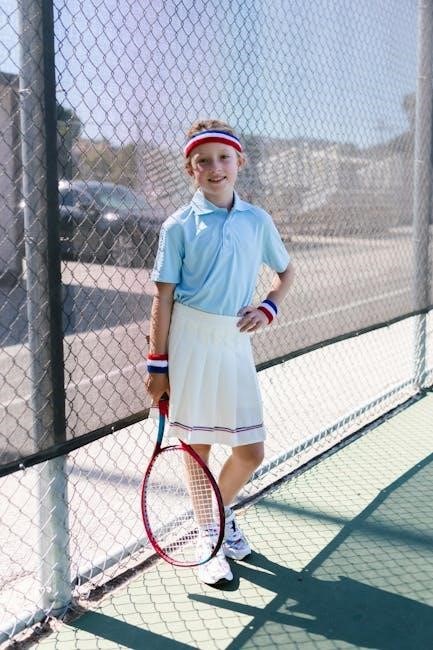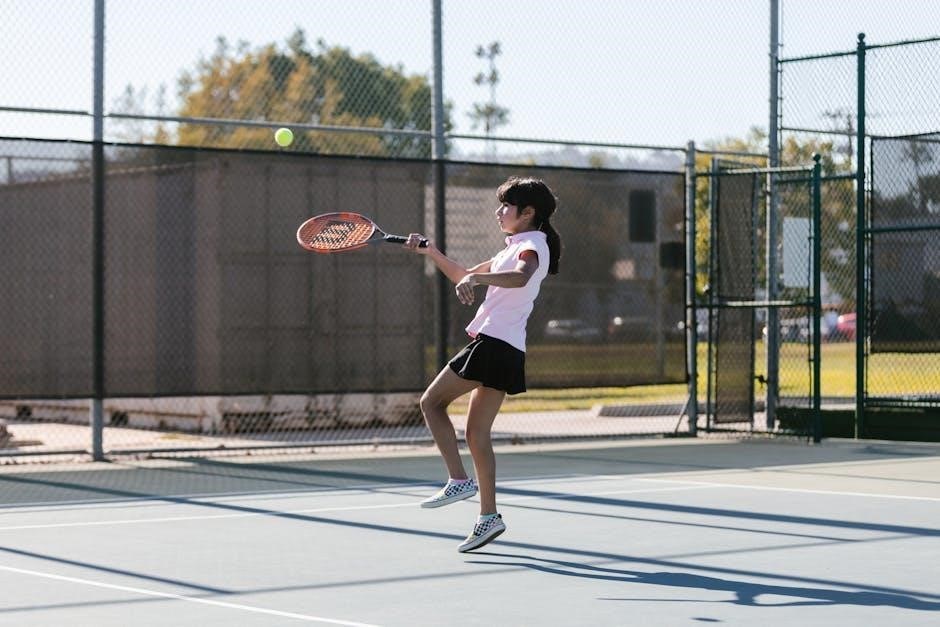Understanding tennis shoe sizing is crucial for comfort and performance. Proper fit ensures optimal support, stability, and mobility during play. Sizes vary between brands, and factors like foot shape and width play a significant role. This guide helps you navigate the complexities of finding the perfect fit for your game.
Factors Affecting Fit
Foot shape, width, and running terrain significantly impact shoe fit. Biomechanics and personal preferences also play a role. Proper sizing ensures comfort and performance, while poor fit can lead to discomfort or injury. Understanding these factors helps in selecting the right shoe for optimal support and mobility during play.


Importance of Foot Shape
Foot shape plays a crucial role in determining the right tennis shoe fit. People have varying foot shapes, including narrow, wide, flat, or high-arched feet, which can significantly affect how a shoe feels. A shoe that fits perfectly for one person may not work for another due to differences in foot shape. For instance, individuals with flat feet may require additional arch support, while those with high arches might need more cushioning. Understanding your foot shape helps in selecting shoes that provide the necessary support and stability, especially during the rapid lateral movements common in tennis. Proper alignment and comfort can prevent issues like blisters, calluses, or even injuries. Additionally, foot shape influences how well the shoe hugs the foot, ensuring optimal performance on the court. It’s essential to consider foot shape when trying on shoes, as it directly impacts both comfort and functionality. By matching your foot shape to the right shoe design, you can enhance your overall tennis experience and maintain peak performance throughout the game.

How to Measure Your Feet

Accurately measuring your feet is essential for finding the right tennis shoe size. Start by standing on a flat surface with your weight evenly distributed on both feet. Place a piece of paper on the floor and trace the outline of each foot while wearing the same type of socks you plan to use with the shoes. Use a ruler to measure the length from the back of the heel to the tip of the longest toe. Record this measurement for both feet, as they may differ slightly. Next, measure the width by wrapping a flexible tape measure around the widest part of your foot, usually just above the arch. Compare these measurements to a size chart, keeping in mind that sizes can vary between brands. For the most accurate results, measure your feet at the end of the day, as feet tend to swell slightly throughout the day. If possible, have someone assist you to ensure precise measurements. This method provides a reliable baseline for selecting the correct size, helping you avoid the discomfort of ill-fitting shoes and ensuring optimal performance on the tennis court.

Understanding Tennis Shoe Size Charts

Tennis shoe size charts map foot length and width to corresponding shoe sizes. They vary by brand and gender, with men’s sizes being larger than women’s. Charts help determine the best fit by correlating measurements to specific sizes, ensuring comfort and performance. Always consult the chart for accurate sizing.
Men vs. Women Size Differences
Significant differences exist between men’s and women’s tennis shoe sizes. Generally, a women’s size 8.5 corresponds to a men’s size 7, though width varies. Men’s shoes typically have a wider fit, with a standard D width, while women’s shoes are narrower, often a B width. This disparity stems from anatomical differences in foot shape and structure. Women’s feet tend to be narrower and have a smaller heel-to-ball length compared to men’s. These variations mean that unisex sizing may not always provide the best fit for both genders. Additionally, the cushioning and support features in men’s and women’s shoes may differ to accommodate different running or playing styles. For instance, women’s shoes might offer more arch support due to higher arches on average. It’s essential to consider these differences when choosing a size, especially if opting for a unisex style. Proper fit ensures comfort and performance, so consulting size charts and trying shoes on is recommended to find the ideal match. Brand-specific sizing can also vary, so paying attention to fit guidelines is crucial for both men and women. Ultimately, understanding these differences helps in making informed decisions when selecting tennis shoes tailored to individual needs.
Brand Size Variations
Different brands often have unique sizing standards, which can make finding the right fit challenging. For instance, a size 10 in one brand might feel noticeably different in another. This variation occurs because brands use different lasts (models) when manufacturing shoes, leading to discrepancies in length, width, and overall shape. Some brands cater to specific foot shapes, such as narrow or wide feet, while others focus on cushioning or support, which can affect how sizes run. For example, Nike and Adidas may differ slightly in their sizing, even for the same numerical size. Additionally, some brands, like Sanwei or Mizuno, might have sizing that does not align with more familiar brands like Butterfly, as noted in user experiences. This inconsistency highlights the importance of trying shoes on or consulting brand-specific size guides before making a purchase. To ensure the best fit, it’s advisable to refer to the sizing charts provided by each brand and consider customer reviews, as they often provide insights into whether a particular style runs true to size, small, or large. By understanding these brand-specific differences, you can make more informed decisions when selecting tennis shoes that match your foot shape and preferences.

How to Choose the Right Size
Choosing the right tennis shoe size involves a combination of measurement, trial, and consideration of personal comfort preferences. Start by accurately measuring your feet, as size can vary depending on the brand and style. Use a foot measuring device or trace your foot on paper to determine your length and width. When trying on shoes, do so in the afternoon, as feet tend to swell slightly during the day. Wear the same type of socks you plan to use during play to ensure a proper fit. A good rule of thumb is to leave about half an inch of space between your longest toe and the shoe’s tip for optimal comfort and mobility;
Additionally, consider the specific demands of your activity. For tennis, which involves quick movements and sharp turns, a snug yet comfortable fit is essential to prevent blisters and provide support. If you’re unsure between sizes, it’s better to size up slightly rather than risk tightness. Many brands also offer width options, so don’t hesitate to explore these if you have narrower or wider feet. Finally, read customer reviews for insights into how a particular brand or style fits, as this can help you make a more informed decision. By taking the time to carefully select your size, you’ll enhance both your performance and comfort on the court.

Common Fit Issues and Solutions
Despite careful measurement and sizing, fit issues can arise. One common problem is a tight toe box, which can cause discomfort and restrict toe movement. To address this, consider shoes with a roomier toe area or consider sizing up slightly. Heel slipping is another issue, often resolved by adjusting lacing techniques or using thicker socks. Narrow or wide feet may require specific width options, which many brands offer.
For athletes with high arches, insufficient support can lead to discomfort. Insoles or orthotics can provide additional cushioning and stability. Blistering is a frequent complaint, typically caused by friction. Wearing moisture-wicking socks or applying blister pads can help prevent this. If shoes feel too tight, stretching certain areas with a shoe stretcher or using a break-in period can improve fit. Conversely, if shoes are too loose, insoles or tighter lacing can enhance stability. Paying attention to these common issues and applying tailored solutions can significantly enhance comfort and performance on the court.

Be First to Comment